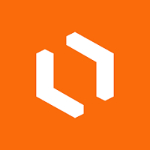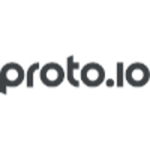List of Best Designing Software
Showing 10 of 30 productsAdobe Creative Cloud is a solution for all your creative needs. This versatile suite includes a wide range of powerful software and tools that allow you to bring your creative ideas to life with ease. Say goodbye to limitations and hello to endless p...Read Adobe Creative Cloud Reviews
Figma is a streamlined digital design tool that allows users to collaboratively create, edit, and share designs in real time. With its intuitive interface and powerful features, Figma revolutionizes the traditional design process and empowers teams t...Read Figma Reviews
Webflow is a website design platform that combines the ease of a drag-and-drop editor with the flexibility of a professional coding environment. With its intuitive interface and robust features, Webflow empowers individuals and businesses to create a...Read Webflow Reviews
Lucidchart is the premier visual workspace that helps teams create and collaborate on diagrams, flowcharts, and more. With its intuitive drag-and-drop interface and powerful features, Lucidchart makes it easy for users to streamline their ideas, proc...Read Lucidchart Reviews
Axure RP is a prototyping and wireframing tool used by designers, product managers, and developers to create interactive and functional prototypes with ease. With its intuitive interface and extensive library of elements, Axure RP allows users to bri...Read Axure RP Reviews
Avion is a groundbreaking software designed to streamline and elevate your business operations. With its innovative features and user-friendly interface, Avion is a tool for enhancing efficiency and driving success. Say goodbye to complex and tedious...Read Avion Reviews
Proto.io is a powerful, user-friendly prototyping tool that allows you to bring your ideas to life. With its intuitive interface and wide range of features, Proto.io helps you create interactive and realistic prototypes for web and mobile application...Read Proto.io Reviews
HotGloo is a and innovative web-based prototyping and mockup tool designed to streamline the entire design process. With its user-friendly interface is a collaboration features, HotGloo makes it easy for teams to create, share, and test prototypes in...Read HotGloo Reviews
FlowMapp is a dynamic and innovative platform designed for visualizing and optimizing complex workflows. With its intuitive interface and powerful features, FlowMapp provides a seamless solution for teams and individuals to plan, collaborate and exec...Read FlowMapp Reviews
Webix is a JavaScript UI library that offers developers a wide range of customizable is a components for creating modern and user-friendly web interfaces. With its flexible and versatile tools, Webix simplifies the process of web development and enha...Read Webix Reviews
- What Is Designing Software?
- Top Reasons Why Businesses Need Designing Software?
- What Are the Top Key Features of Designing Software?
- What are the top benefits of Designing Software?
- What Are the Steps to Choose the Right Designing Software?
- What Are the Types of Designing Software for Different Industries?
- What Are the Technology Trends for Best Designing Software?
- What Are the Deployment Options for Designing Software?
What Is Designing Software?
The process of envisioning, planning, and structuring software with the primary purpose of ensuring that the designing software developed satisfies the demands of the user is known as software design. It encompasses both high-level and low-level planning, as well as activities such as diagram creation, user interface design, database schemas, flowcharts, and class diagrams.
The top design software is required for the successful completion of any project. Software design entails breaking down a large problem into smaller components in order to have a deeper knowledge of each component and the relationships between them. It also include determining user requirements, assuring the system's dependability and robustness, performance optimization, and user experience.
We may adopt a more coherent approach to our software solutions thanks to software design. The depiction of the logical and physical components of the software system, such as data structure, algorithm, and necessary architecture, is included in software design.
The best design software is the initial step toward improved coding and algorithm analysis, which ensures that the intended system is functional and efficient. Overall, knowing the complexities of software design is critical for the successful development of software that meets the needs of users.
Top Reasons Why Businesses Need Designing Software?
1. To rapidly and efficiently produce professional designs.
2. To improve the design process's efficiency by automating repetitive processes.
3. Use pre-made templates and shapes to create higher-quality designs in less time.
4. To allow team members to collaborate on design work and to streamline the approval process.
5. To achieve uniformity throughout all initiatives, regardless of size.
6. Shorter production periods provide for lower costs and higher revenues.
7. Create customized reports that detail the design process, client input, and expenditures.
8. To keep track of project progress, deadlines, and milestones.
9. Make certain that all projects follow brand requirements, color palettes, and logos.
10. To test and evaluate designs to ensure their effectiveness.
11. To review design proofs so that users can notice any errors before they are implemented.
12. Keeping files secure and sharing designs with clients, vendors, and other stakeholders.
13. To provide customers with access to a library of typefaces, pictures, textures, and vectors for use in creating their own designs.
14 Optimize designs for different platforms, resolutions, and media outlets.
15. Maintaining a design edge in order to produce excellent user experiences.
What Are the Top Key Features of Designing Software?
1. Usability: When designing software, the user experience should be straightforward and intuitive. The user interface should be visually appealing and user-friendly, with simple navigation.
2. Adaptability: The best design software should be easily adaptable and configurable to the needs and preferences of the user.
3. Scalability: The top design software should be scalable, allowing the user to add features as their needs evolve over time.
4. Reliability: Designing software designed to be durable and reliable, with consistent performance and stability across many platforms.
5. Security: When building software, security should be a high priority, and measures should be implemented to track and secure user data, as well as to prevent hostile assaults.
6. Testing and Quality Assurance: Testing should be done throughout the development process to guarantee that the software is of high quality.
7. Documentation: Clear and up-to-date documentation should be provided to ensure that users get the most out of the product and that troubleshooting is as simple as possible.
8. Support: The best design software should be easily supported by the company or developer, allowing users to obtain assistance when necessary.
9. Version Control: A version control system should be used to manage software changes, enabling for simple rollbacks if necessary.
10. Open Source Development: When building software, open source development should become common practice, enabling for cooperation with different developers who can immediately spot flaws and offer new features.
What are the top benefits of Designing Software?
1. Improved User Experience: Creating an intuitive user interface that allows users to navigate their way smoothly and efficiently will improve the overall user experience.
2. Better Product Quality: The best design software can help ensure that bugs, glitches, and other problems do not detract from the user experience.
3. Enhanced Productivity: With an efficient design system, users may execute tasks more quickly and with less effort, resulting in enhanced productivity.
4. Improve Security: Using secure coding approaches and proactive design can help protect personal information.
5. Shortened Development Time: A well-thought-out design strategy can shorten the software development process and lower software production costs.
6. Facilitates Adaptability: The top design software creates a framework for scalability, allowing businesses to easily adjust.
7. Increased Profitability: By creating a more user-friendly design, businesses can reduce consumer irritation and enhance profitability.
What Are the Steps to Choose the Right Designing Software?
1. Determine Your Design Needs: Begin by determining what type of design project you are pursuing and what form of design software would be most appropriate for your specific needs. Consider the type of output you want, the features and functionality required, and the project's complexity.
2. Consider the Cost: Consider the cost of the design program, as well as any additional features you may want to acquire, and determine whether the software is within your budget. Consider any additional costs related with the software, such as hardware compatibility and user training.
3. User Feedback Research: Read user reviews of the software from both specialists and laypeople to learn more about the user.
4. Try It Out: If feasible, try out the software before purchasing it. Contact the program vendor to obtain a trial version, then test the product to ensure that it meets your expectations.
5. Read the Terms and Conditions: Before you buy the best design software, thoroughly read the terms and conditions to understand exactly what you're receiving. Understand the license agreement to ensure that you are permitted to use the program in the manner that you plan.
6. Seek Professional Advice: The top design software may be beneficial to consult with a professional who is familiar with the software in question. Pose questions and listen to their responses. Based on their experience, this can help you make an informed selection.
What Are the Types of Designing Software for Different Industries?
Design software for many sectors can be broadly classified into three types:
1. CAD (Computer-Aided Design) Software: This software is used to create 2D and 3D technical drawings and is utilized in many industries, including architecture, automotive, and aeronautics. AutoCAD, Solidworks, CATIA, and Pro/Engineer are a few examples.
2. Digital Modeling program: This program is used to generate complicated three-dimensional models for artistic and design purposes. It is employed in a variety of disciplines including architecture, product design, fashion, and entertainment. Rhino 3D, Blender, Maya, and ZBrush are a few examples.
3. Graphic design software: It is used to produce digital artwork such as logos, site designs, and graphics for prints and other items. It is utilized in a variety of industries, including advertising, media, and web design. Photoshop, In Design, Illustrator, and CorelDraw are a few examples.
What Are the Technology Trends for Best Designing Software?
Technology trends for top Designing Software are continually changing and frequently show no signs of slowing down.
Adobe Photoshop, CorelDRAW, Adobe Illustrator, Autodesk Maya, and Blender are among the most popular design programs. These technologies give users access to strong graphics and design elements, as well as advanced tools like 3D modeling and animation.
Furthermore, many of these programs are now combining cutting-edge technology into their product offerings, such as augmented reality, motion capture, artificial intelligence, and virtual reality.
Moving forward, these tools will become even more powerful and user-friendly, not only by providing more advanced options, but also by allowing users to accomplish more with their ideas without requiring much technical knowledge.
What Are the Deployment Options for Designing Software?
The designing software deployment alternatives are determined by the development lifecycle, project needs, and the specific program design.
1. On-premises, cloud, mobile, virtual application(s), and containerized application(s) are the five major deployment options. When apps, servers, and other hardware assets are installed in a local or on-site environment, developers and IT staff have direct control.
2. The use of cloud technology to deploy or access software and its associated services is known as cloud deployment. This results in lower hardware costs, more scalability, and improved performance.
3. The process of building and deploying apps on mobile devices is referred to as mobile deployment. This necessitates the use of specific tools and programming techniques.
4. The process of hosting applications in a virtualized environment is known as virtual application deployment. This enables greater scalability, cost savings, and faster implementation.
5. The process of designing, deploying, and managing applications within a container platform is known as containerized application deployment. This improves portability, scalability, and runtime separation while also saving money.










